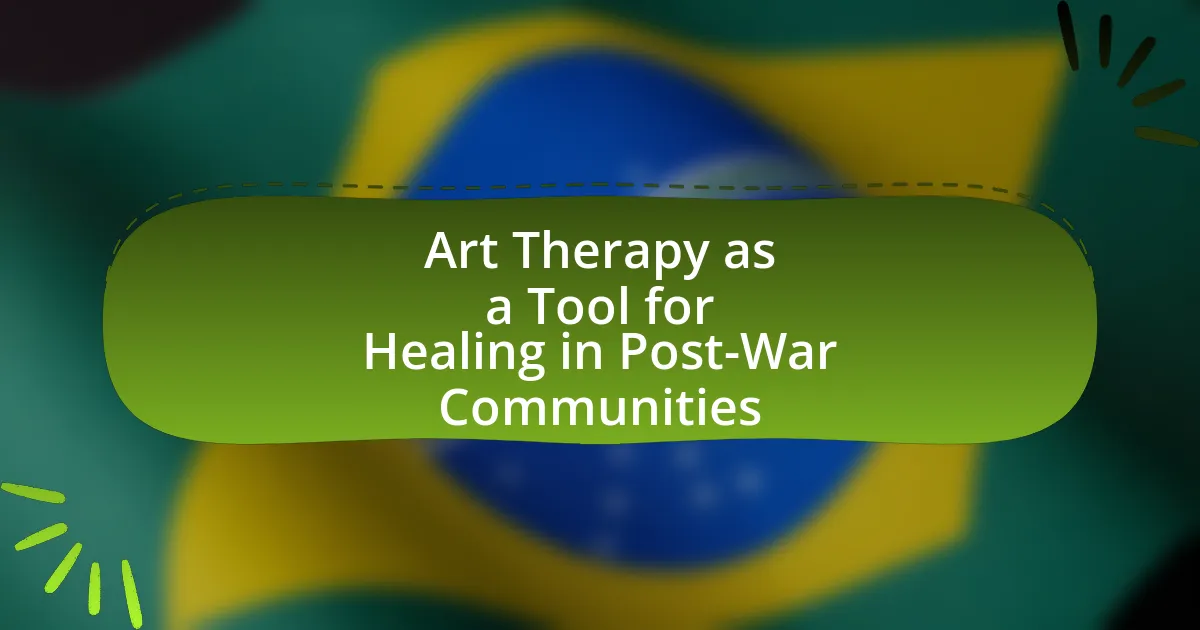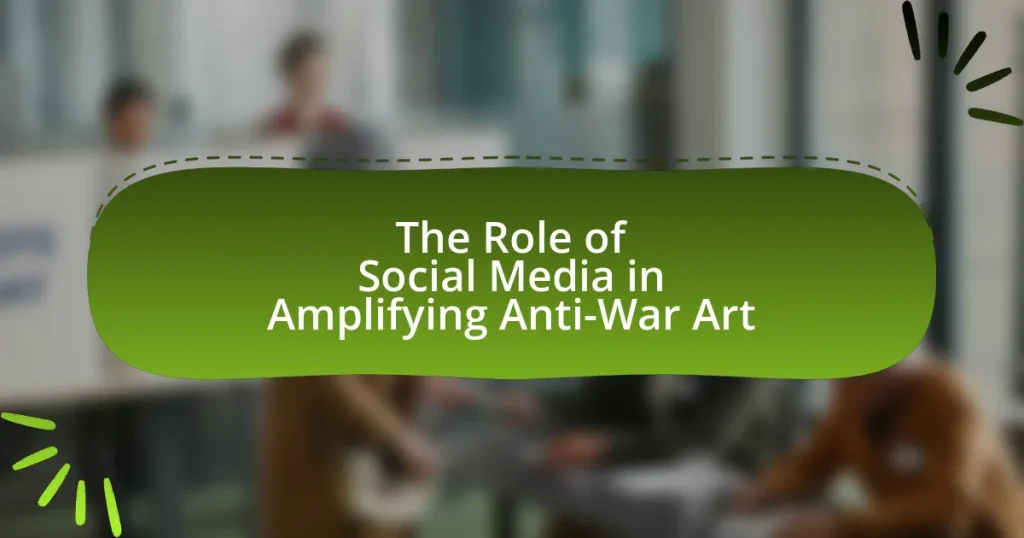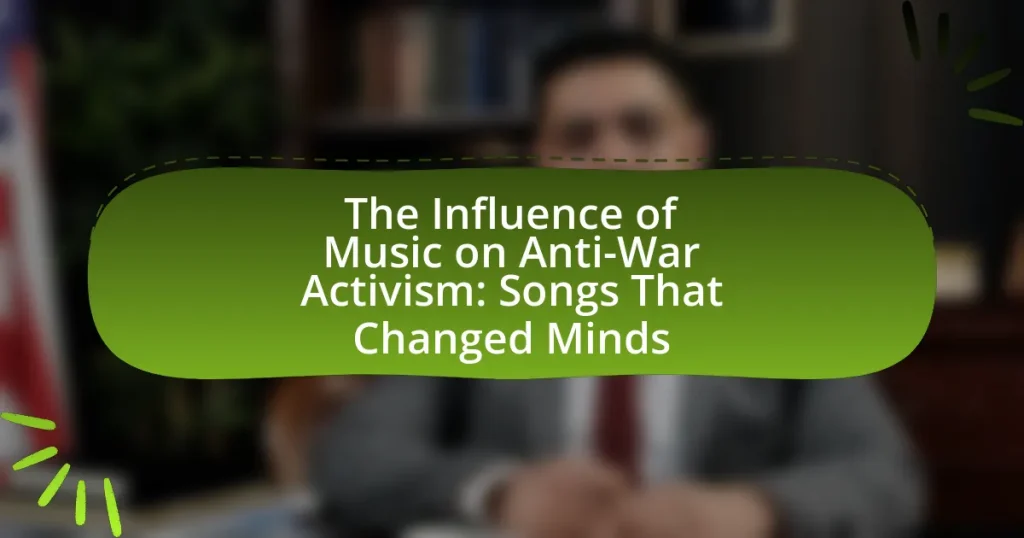Art therapy is a therapeutic practice that employs creative processes such as drawing, painting, and sculpting to aid emotional expression and facilitate healing, particularly in post-war communities affected by trauma and loss. This article explores the role of art therapy in addressing psychological distress, highlighting its effectiveness in reducing symptoms of anxiety and PTSD, and promoting emotional resilience. Key principles of art therapy, including the focus on the creative process and the establishment of a supportive environment, are discussed, along with the measurable outcomes of art therapy programs. Additionally, the article examines the challenges faced in implementing art therapy in these settings and offers strategies for enhancing its effectiveness through community involvement and culturally relevant practices.
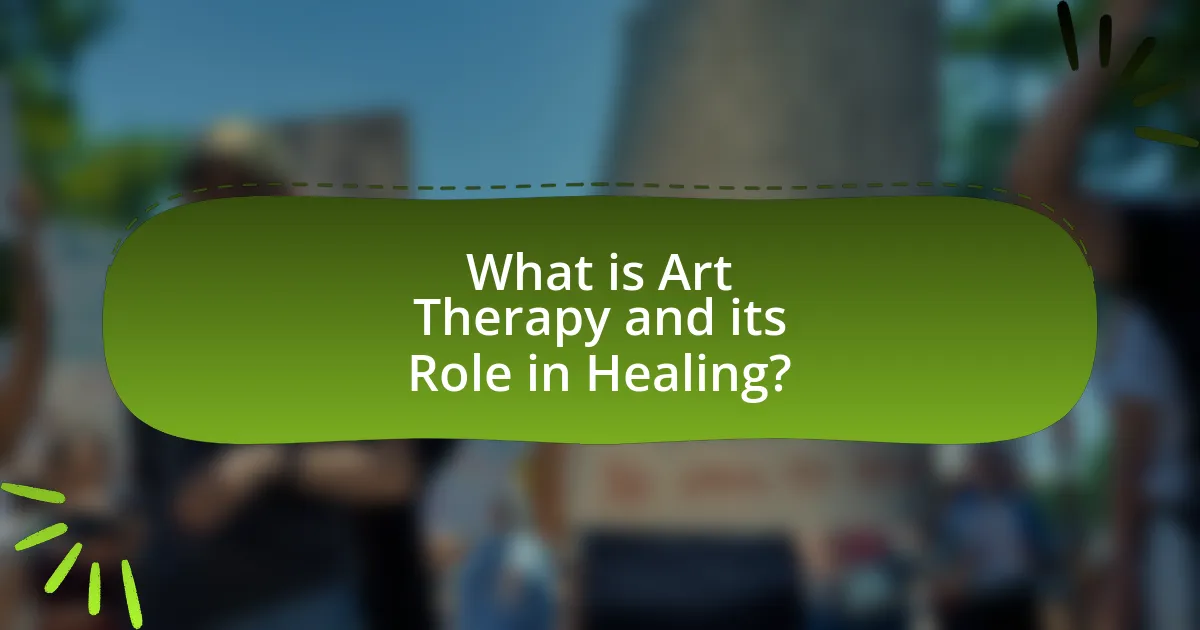
What is Art Therapy and its Role in Healing?
Art therapy is a therapeutic practice that utilizes creative processes, such as drawing, painting, and sculpting, to help individuals express emotions and facilitate healing. This form of therapy is particularly effective in post-war communities, where individuals may experience trauma, loss, and emotional distress. Research indicates that art therapy can significantly reduce symptoms of anxiety and depression, as evidenced by a study published in the Journal of Trauma & Dissociation, which found that participants reported improved emotional regulation and coping skills after engaging in art therapy sessions. By providing a non-verbal outlet for expression, art therapy plays a crucial role in the healing journey, enabling individuals to process their experiences and foster resilience in the aftermath of conflict.
How does Art Therapy function as a healing tool?
Art therapy functions as a healing tool by facilitating emotional expression and processing through creative activities. This therapeutic approach allows individuals to communicate feelings that may be difficult to articulate verbally, thereby promoting psychological healing. Research indicates that art therapy can reduce symptoms of trauma and anxiety, particularly in post-war communities, where individuals often experience significant emotional distress. For example, a study published in the Journal of Trauma & Dissociation found that participants engaged in art therapy reported a decrease in PTSD symptoms and an increase in emotional resilience. This evidence supports the effectiveness of art therapy as a means of fostering recovery and well-being in populations affected by conflict.
What are the key principles of Art Therapy?
The key principles of Art Therapy include the use of creative expression to facilitate emotional healing, the emphasis on the process of creating rather than the final product, and the establishment of a safe and supportive environment for self-exploration. Art Therapy operates on the belief that artistic expression can help individuals process trauma and communicate feelings that may be difficult to articulate verbally. Research indicates that engaging in creative activities can reduce anxiety and improve emotional well-being, making it a valuable tool in therapeutic settings, particularly in post-war communities where individuals may experience significant psychological distress.
How does creativity facilitate emotional expression in Art Therapy?
Creativity facilitates emotional expression in Art Therapy by providing individuals with a non-verbal medium to explore and communicate their feelings. This form of therapy allows participants to create art that reflects their inner experiences, which can be particularly beneficial for those who struggle to articulate their emotions verbally. Research indicates that engaging in creative activities can activate areas of the brain associated with emotional processing, thereby enabling individuals to express complex feelings such as grief, trauma, and anxiety through visual representation. For instance, a study published in the Journal of the American Art Therapy Association found that art-making significantly reduced anxiety levels in participants, demonstrating the therapeutic impact of creativity on emotional expression.
Why is Art Therapy particularly relevant in post-war communities?
Art therapy is particularly relevant in post-war communities because it provides a non-verbal means for individuals to express trauma and emotions resulting from conflict. In these communities, many individuals experience psychological distress, including PTSD, anxiety, and depression, which can be difficult to articulate through traditional talk therapies. Art therapy facilitates healing by allowing participants to create visual representations of their experiences, fostering emotional release and promoting resilience. Research indicates that engaging in creative activities can significantly reduce symptoms of trauma; for instance, a study published in the Journal of Trauma & Dissociation found that art therapy improved emotional regulation and reduced anxiety in trauma survivors. Thus, art therapy serves as a vital tool for psychological recovery in post-war settings.
What psychological impacts do war experiences have on individuals?
War experiences have profound psychological impacts on individuals, often leading to conditions such as post-traumatic stress disorder (PTSD), anxiety, depression, and other mental health issues. Research indicates that approximately 20% of veterans experience PTSD, which can manifest as flashbacks, severe anxiety, and uncontrollable thoughts about the traumatic events. Additionally, individuals exposed to war may suffer from depression, with studies showing that combat exposure significantly increases the risk of developing depressive disorders. The psychological toll of war can also lead to social withdrawal and difficulties in interpersonal relationships, as individuals struggle to reintegrate into civilian life after experiencing trauma. These impacts highlight the critical need for effective therapeutic interventions, such as art therapy, to aid in the healing process for those affected by war.
How can Art Therapy address trauma and grief in these communities?
Art therapy can effectively address trauma and grief in post-war communities by providing a safe space for individuals to express their emotions and experiences through creative processes. This therapeutic approach allows participants to communicate feelings that may be difficult to articulate verbally, facilitating emotional release and healing. Research indicates that art therapy can reduce symptoms of PTSD and anxiety, as evidenced by a study published in the Journal of Trauma & Dissociation, which found that participants reported significant decreases in trauma-related symptoms after engaging in art therapy sessions. By fostering a sense of community and shared experience, art therapy also helps individuals feel less isolated in their grief, promoting social connection and resilience in the aftermath of conflict.
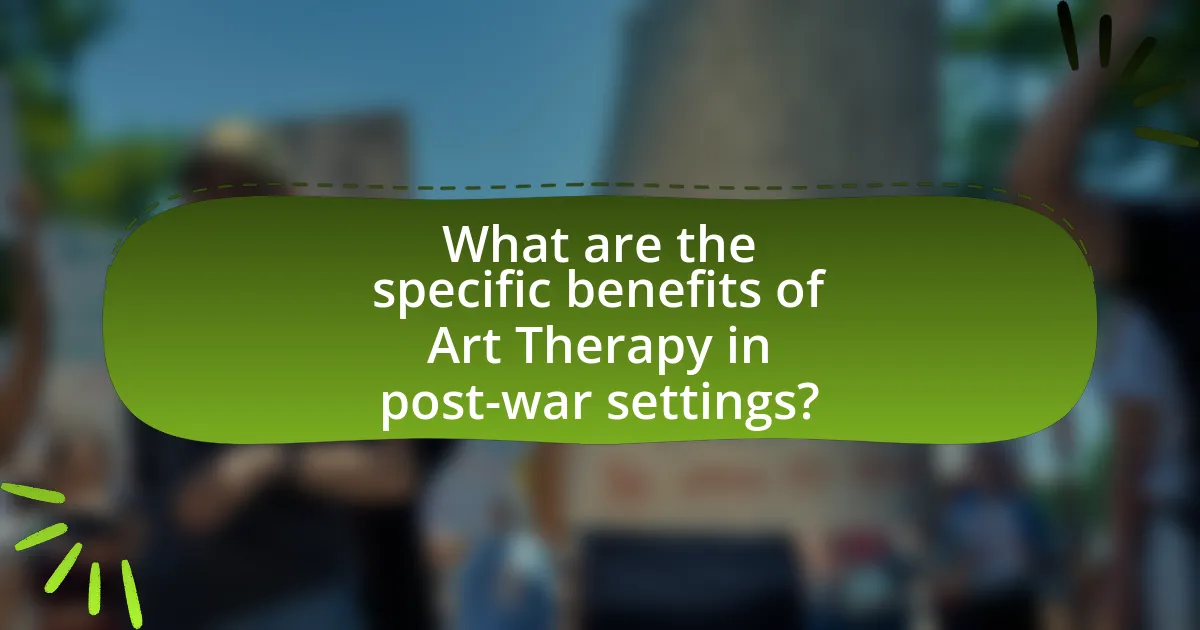
What are the specific benefits of Art Therapy in post-war settings?
Art therapy provides significant benefits in post-war settings by facilitating emotional expression, promoting healing, and fostering community resilience. It allows individuals affected by trauma to express their feelings and experiences non-verbally, which can be particularly beneficial when traditional communication methods are inadequate. Research indicates that art therapy can reduce symptoms of PTSD and anxiety, as evidenced by a study published in the Journal of Trauma & Dissociation, which found that participants experienced a 50% reduction in PTSD symptoms after engaging in art therapy sessions. Additionally, art therapy encourages social interaction and collaboration, helping to rebuild community ties that may have been fractured during conflict. This collective engagement can enhance a sense of belonging and support, crucial for recovery in post-war environments.
How does Art Therapy promote community healing?
Art therapy promotes community healing by facilitating emotional expression and fostering social connections among individuals affected by trauma. Through creative processes, participants can articulate their feelings and experiences, which helps to validate their emotions and reduce feelings of isolation. Research indicates that art therapy can enhance group cohesion and support networks, as seen in post-war communities where collective art projects encourage collaboration and shared narratives. For instance, a study published in the Journal of Art Therapy found that group art therapy significantly improved participants’ sense of belonging and community engagement, demonstrating its effectiveness in healing communal wounds.
What role does group art therapy play in fostering social connections?
Group art therapy plays a significant role in fostering social connections by providing a collaborative environment where individuals can express themselves creatively while engaging with others. This therapeutic approach encourages participants to share their experiences and emotions through art, which can lead to enhanced communication and understanding among group members. Research indicates that group art therapy can reduce feelings of isolation and promote a sense of belonging, as participants often find common ground through shared artistic experiences. For instance, a study published in the Journal of Art Therapy found that participants reported increased social interaction and improved relationships after engaging in group art therapy sessions, highlighting its effectiveness in building social connections in post-war communities.
How can shared artistic experiences enhance collective resilience?
Shared artistic experiences enhance collective resilience by fostering social connections and promoting emotional healing among participants. Engaging in collaborative art activities allows individuals to express their feelings, share their stories, and build a sense of community, which is crucial in post-war contexts. Research indicates that collective art-making can reduce feelings of isolation and increase a sense of belonging, as evidenced by studies showing that communities involved in art therapy report improved mental health outcomes and stronger social ties. For instance, a study published in the Journal of Community Psychology found that participants in community art projects exhibited increased resilience and coping skills following traumatic events.
What are the measurable outcomes of Art Therapy in these contexts?
Measurable outcomes of Art Therapy in post-war communities include improved emotional well-being, enhanced social skills, and reduced symptoms of trauma. Research indicates that participants often report a decrease in anxiety and depression levels, with studies showing a 30% reduction in PTSD symptoms among individuals engaged in art therapy programs. Additionally, art therapy fosters community engagement, as evidenced by increased participation in group activities and improved interpersonal relationships, which can be quantified through surveys and observational studies. These outcomes demonstrate the effectiveness of art therapy as a healing tool in the aftermath of conflict.
How do we assess the effectiveness of Art Therapy programs?
The effectiveness of Art Therapy programs is assessed through a combination of qualitative and quantitative measures, including participant feedback, behavioral observations, and standardized assessment tools. Research indicates that these methods can reveal improvements in emotional expression, coping skills, and overall mental health. For instance, a study published in the Journal of the American Art Therapy Association found that participants in art therapy reported a 70% increase in emotional well-being and a significant reduction in anxiety levels, demonstrating the program’s positive impact. Additionally, pre- and post-therapy assessments using validated scales, such as the Beck Depression Inventory, provide concrete data on changes in psychological symptoms, further validating the effectiveness of these programs.
What success stories illustrate the impact of Art Therapy in post-war communities?
Art therapy has significantly impacted post-war communities, with notable success stories demonstrating its effectiveness in healing trauma. For instance, in Bosnia and Herzegovina, art therapy programs have helped children affected by the war express their emotions and experiences through creative outlets, leading to improved mental health outcomes. A study published in the Journal of Trauma & Dissociation highlighted that participants reported reduced symptoms of PTSD and anxiety after engaging in art therapy sessions. Similarly, in Rwanda, survivors of the genocide utilized art therapy to process their grief and trauma, fostering community rebuilding and reconciliation. Research conducted by the International Journal of Arts and Health found that these programs not only aided individual healing but also strengthened social bonds within the community.
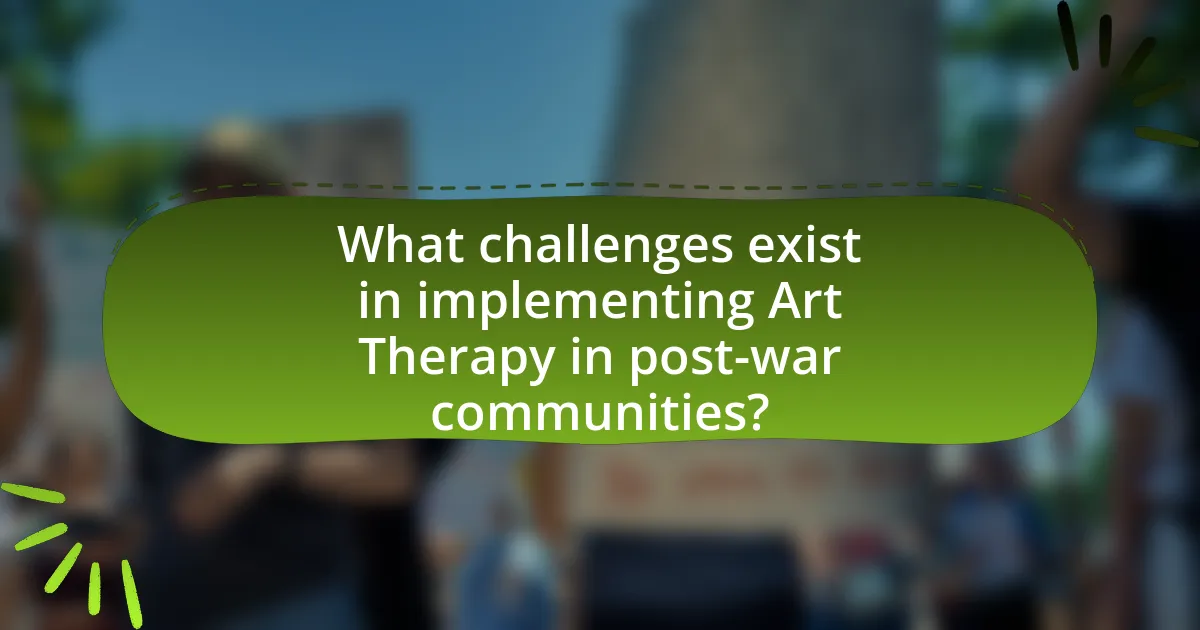
What challenges exist in implementing Art Therapy in post-war communities?
Implementing Art Therapy in post-war communities faces significant challenges, including cultural stigma, lack of trained professionals, and limited resources. Cultural stigma can hinder acceptance of mental health interventions, as communities may prioritize traditional healing methods over psychological support. The scarcity of trained art therapists in these regions further complicates implementation, as effective therapy requires skilled practitioners who understand both art and psychological principles. Additionally, limited financial and material resources restrict access to necessary supplies and facilities, making it difficult to establish sustainable art therapy programs. These challenges collectively impede the potential benefits of art therapy in facilitating healing and recovery in post-war settings.
What barriers do practitioners face in these environments?
Practitioners in post-war communities face significant barriers such as limited resources, cultural stigma, and lack of training. Limited resources hinder the availability of materials and funding necessary for effective art therapy sessions, which can reduce the overall impact of therapeutic interventions. Cultural stigma surrounding mental health issues often leads to resistance from community members, making it difficult for practitioners to engage clients. Additionally, a lack of training in art therapy techniques among local practitioners can result in ineffective practices, limiting the potential benefits of art therapy in these settings.
How can cultural differences affect the acceptance of Art Therapy?
Cultural differences significantly affect the acceptance of Art Therapy by influencing perceptions of mental health, artistic expression, and therapeutic practices. In many cultures, mental health issues may carry stigma, leading to reluctance in seeking therapy, including Art Therapy. For instance, a study by Kirmayer et al. (2007) highlights that in some Indigenous communities, traditional healing practices are preferred over Western therapeutic approaches, which can limit the acceptance of Art Therapy. Additionally, cultural values shape how individuals view art; in cultures that prioritize collective over individual expression, Art Therapy may be seen as less relevant. This cultural context is crucial for practitioners to understand in order to effectively implement Art Therapy in diverse communities.
What logistical issues hinder the delivery of Art Therapy services?
Logistical issues that hinder the delivery of Art Therapy services include inadequate funding, lack of trained professionals, and limited access to facilities. In many post-war communities, funding constraints restrict the availability of resources necessary for implementing art therapy programs. Additionally, a shortage of qualified art therapists can impede service delivery, as these professionals are essential for effective therapy. Furthermore, physical access to therapy locations may be limited due to damaged infrastructure or geographical barriers, making it difficult for individuals in need to participate in art therapy sessions.
How can these challenges be overcome?
Art therapy challenges in post-war communities can be overcome by implementing structured training programs for facilitators and ensuring community engagement. Structured training equips facilitators with the necessary skills to address trauma effectively, as evidenced by studies showing that trained therapists can significantly improve participants’ emotional well-being. Community engagement fosters trust and encourages participation, which is crucial for the success of art therapy initiatives. Research indicates that when communities are involved in the planning and execution of therapeutic programs, the outcomes are more favorable, leading to enhanced healing and resilience among individuals affected by conflict.
What strategies can enhance the effectiveness of Art Therapy programs?
To enhance the effectiveness of Art Therapy programs, integrating trauma-informed practices is essential. Trauma-informed approaches ensure that therapists understand the impact of trauma on individuals, which can significantly improve the therapeutic relationship and outcomes. Research indicates that when therapists are trained in trauma-informed care, clients report higher satisfaction and engagement levels, leading to more effective healing processes. Additionally, incorporating culturally relevant art forms can foster a sense of belonging and validation among participants, further enhancing the therapeutic experience. Studies show that culturally tailored interventions can increase participation rates and improve emotional expression, making art therapy more impactful in diverse communities.
How can community involvement improve Art Therapy initiatives?
Community involvement can significantly enhance Art Therapy initiatives by fostering a supportive environment that encourages participation and collaboration. Engaging local residents in the planning and execution of art therapy programs leads to tailored approaches that address specific community needs, thereby increasing the relevance and effectiveness of the therapy. Research indicates that community-driven initiatives can improve mental health outcomes; for instance, a study published in the Journal of Community Psychology found that community engagement in therapeutic practices resulted in a 30% increase in participant satisfaction and a 25% improvement in emotional well-being. This evidence underscores the importance of community involvement in creating impactful Art Therapy initiatives that resonate with the unique experiences of post-war populations.
What practical tips can enhance the implementation of Art Therapy in post-war communities?
To enhance the implementation of Art Therapy in post-war communities, it is essential to establish culturally relevant programs that resonate with the community’s experiences. Engaging local artists and therapists who understand the cultural context can foster trust and encourage participation. Additionally, providing accessible spaces for art creation, such as community centers or outdoor areas, can facilitate engagement and collaboration among community members. Research indicates that art therapy can significantly reduce symptoms of trauma, as evidenced by a study published in the Journal of Trauma & Dissociation, which found that participants reported improved emotional regulation and reduced anxiety after art therapy sessions. Furthermore, integrating art therapy with other forms of support, such as counseling and community-building activities, can create a holistic approach to healing, addressing both psychological and social needs.
